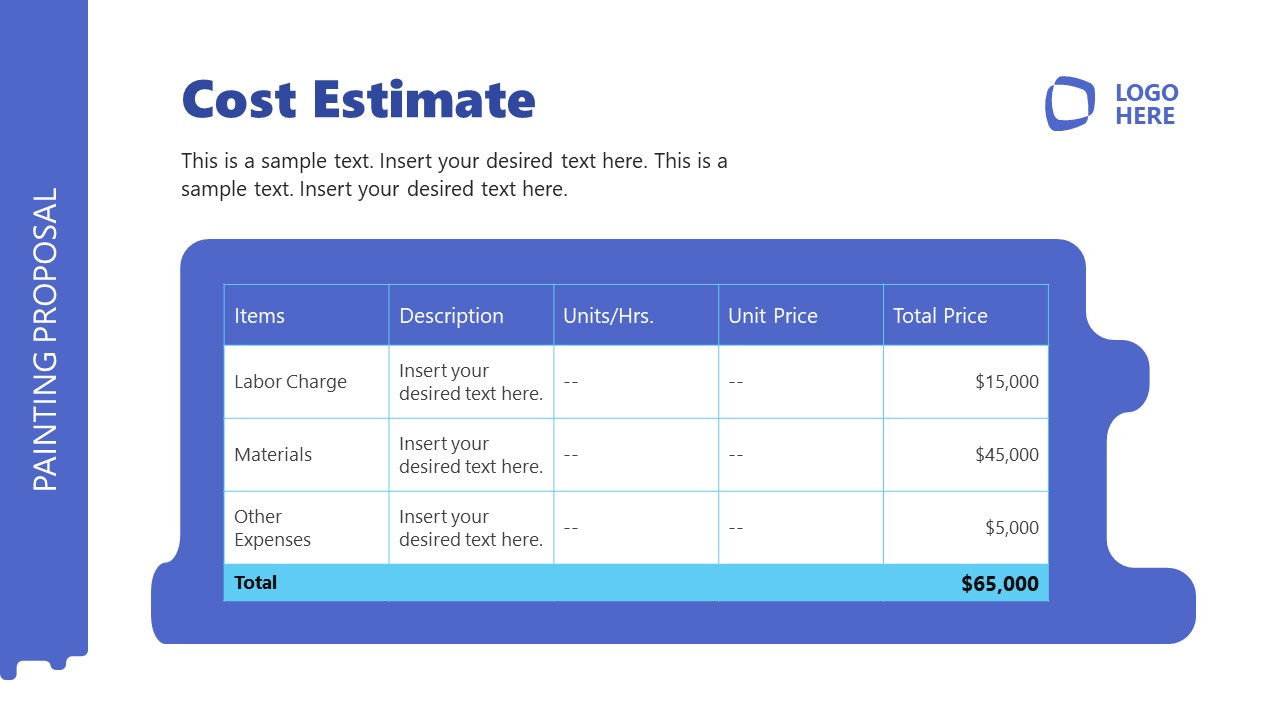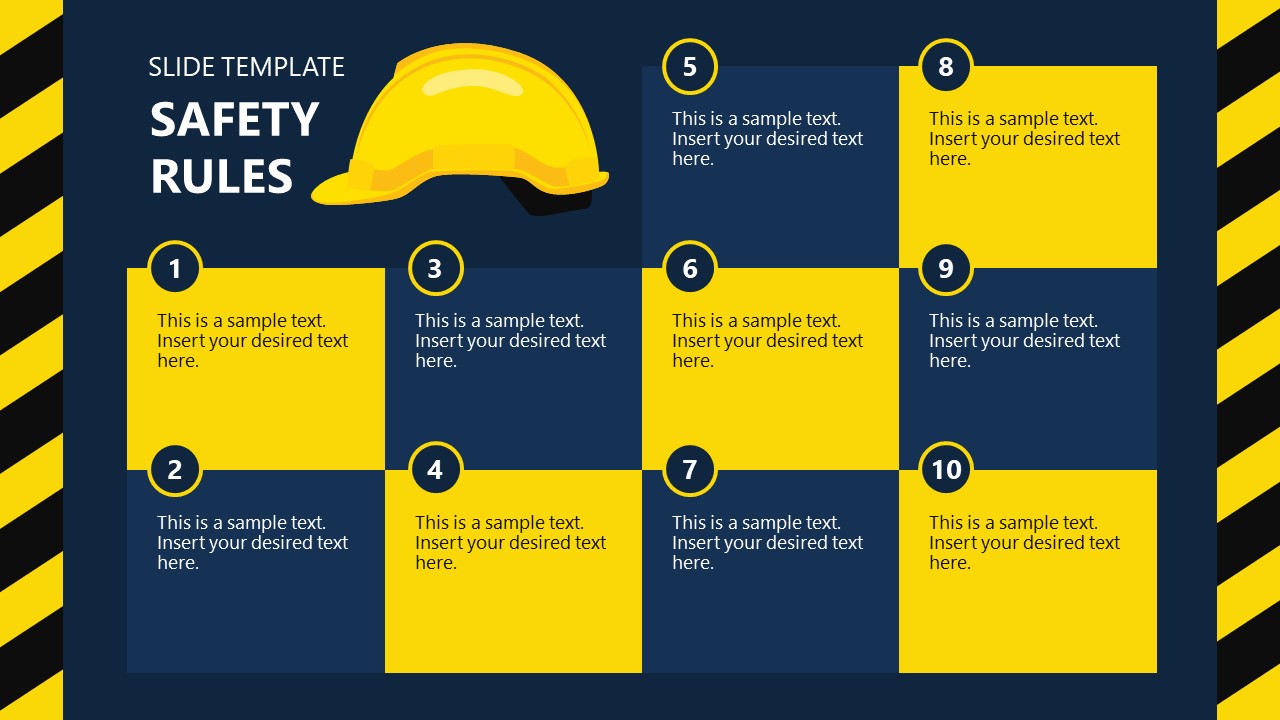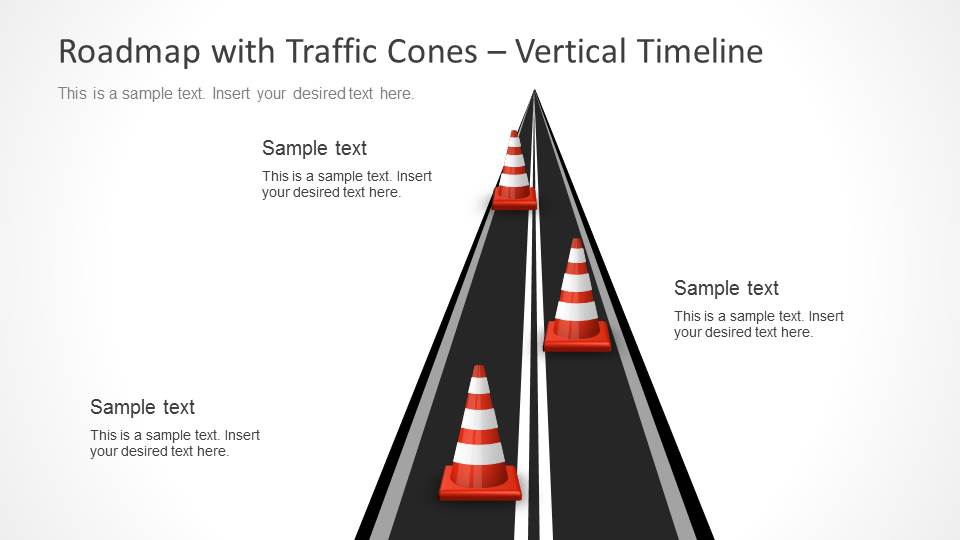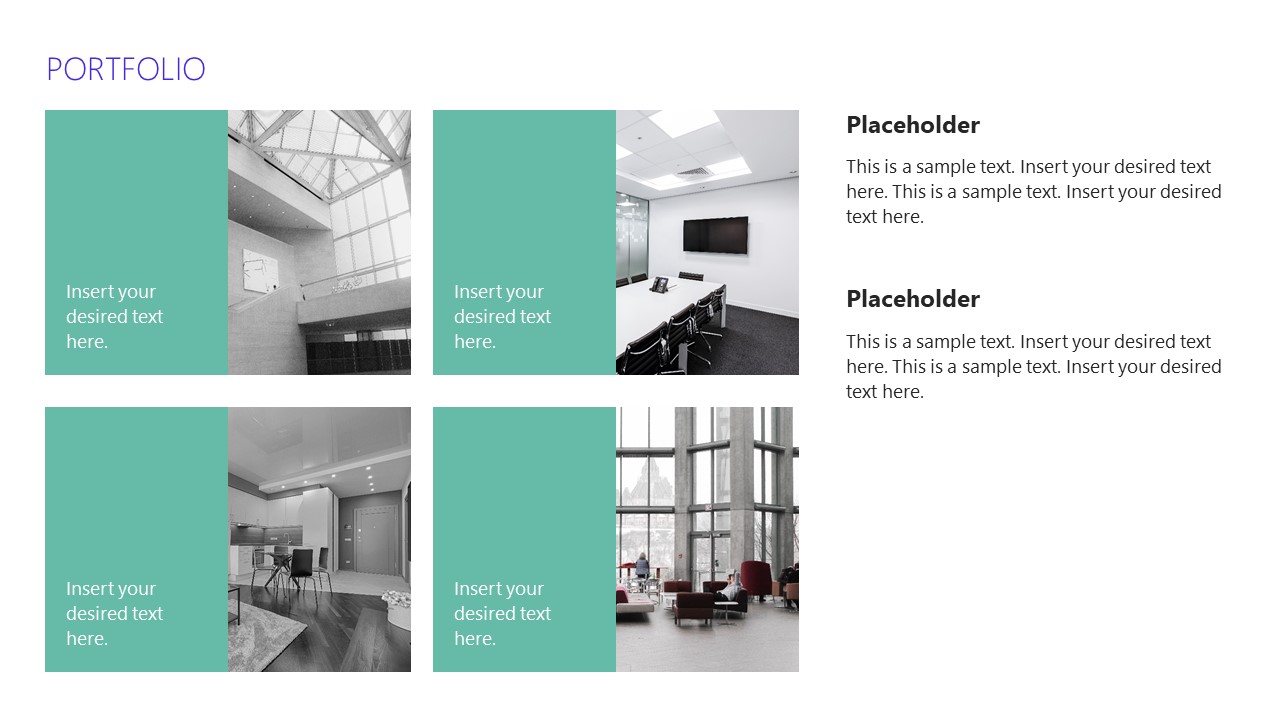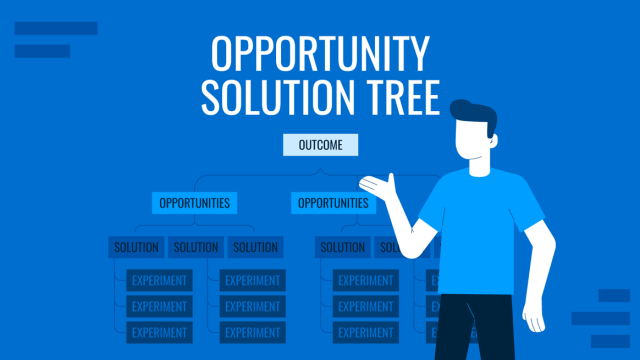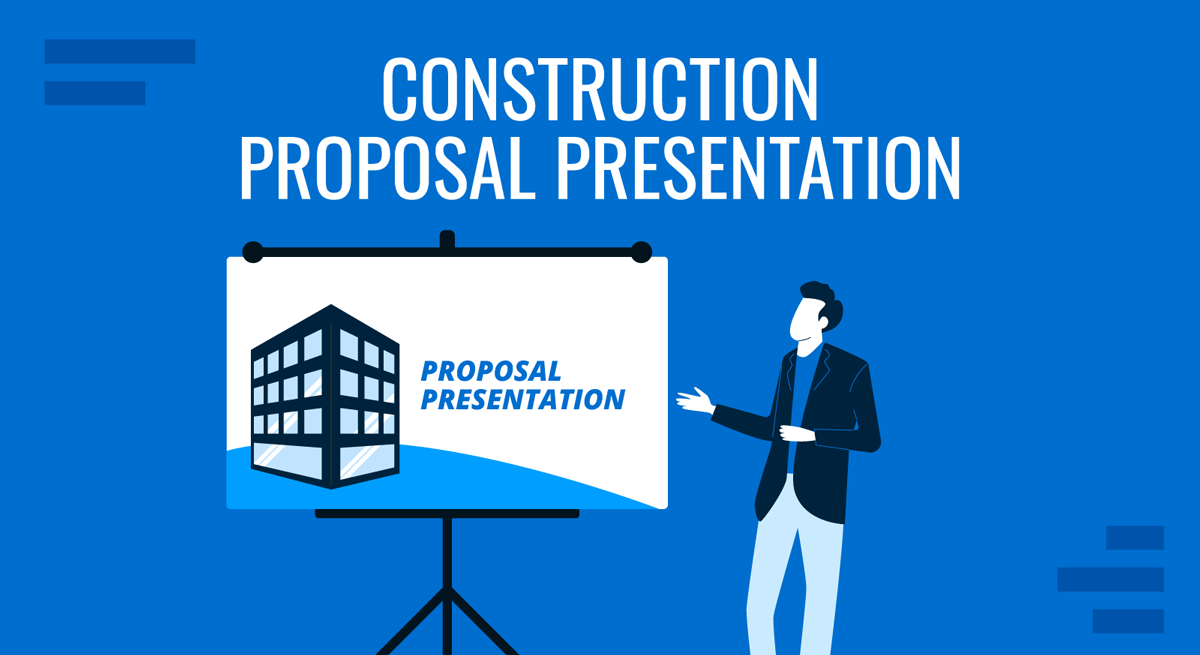
A construction proposal presentation is critical in securing new projects and showcasing a contractor’s professionalism. It details a project’s scope, timeline, and costs and lays the groundwork for a clear, professional client-contractor relationship. Using a construction proposal template can streamline the process, ensuring all essential information is presented accurately and effectively.
In this article, we will explore the essentials of crafting a successful proposal, from understanding its basic requirements to recommended construction proposal PPT templates to make the task far easier.
Table of Contents
- What is a Construction Proposal?
- Why do we Need a Construction Proposal Template for Presentations?
- What Should a Construction Proposal Presentation Include?
- Using Visual Aids in Construction Proposal Presentations
- Recommended Construction Proposal PPT Templates
- FAQs
- Final Words
What is a Construction Proposal?
A construction proposal is a document prepared by a contractor or construction company that outlines a project’s specifics, including timelines, costs, and deliverables. It serves as a formal offer to complete the construction work for a specified price, within a set period, and following the outlined methods and standards.
Construction proposals play a vital role in setting client expectations and protecting both parties from misunderstandings or legal issues. We can write from simple residential proposals to complex commercial and industrial project proposals. Each type, however, must be tailored to its audience and project size, ensuring clarity and transparency.
Why do we Need a Construction Proposal Template for Presentations?
We may think that a construction proposal template is a luxury, but in a time when visuals are the main selling factor, where referrals often come from social media recommendations, we ought to care about the aesthetics of our formal documents.
A construction proposal template acts as a framework for presenting information regarding our construction proposal. It is structured topic by topic, and the best part is that it can be reused as many times as required. A company can add its brand identity to its slide deck, and create typical cases of construction proposals according to usage or project size. As a result, they save countless hours in the design process as they just need to change these elements from presentation to presentation:
- Project information
- Client’s name
- Date
- Budget and quantity takeoff
- Project images
By using a consistent aesthetic across our projects, we ensure professionalism and inspire trust from our clients. Additionally, as we go section by section, it acts as a checklist, reviewing that all the information is appropriately updated.
What Should a Construction Proposal Presentation Include?
An effective construction proposal covers every aspect of the project, addressing client questions and establishing clear expectations. Each section builds trust and ensures both parties mutually understand project specifics.
Essential Sections of a Construction Proposal
- Project Overview: Summarize the project’s key aspects, client needs, and objectives.
- Scope of Work: Detail the tasks, responsibilities, and phases involved.
- Timeline: Provide a start-to-end project timeline broken into key phases or milestones.
- Budget & Quantity Takeoff: Include an itemized cost estimate that includes materials, labor, and additional expenses.
- Permits and Compliance: Specify any required permits or industry compliance standards.
- Terms and Conditions: Address warranties, contingencies, and legal agreements as necessary.
Adding a table or list to outline the proposal sections makes navigating the document easier. When clients see each section clearly outlined, they grasp the entire proposal’s scope more effectively, fostering a sense of trust and transparency.
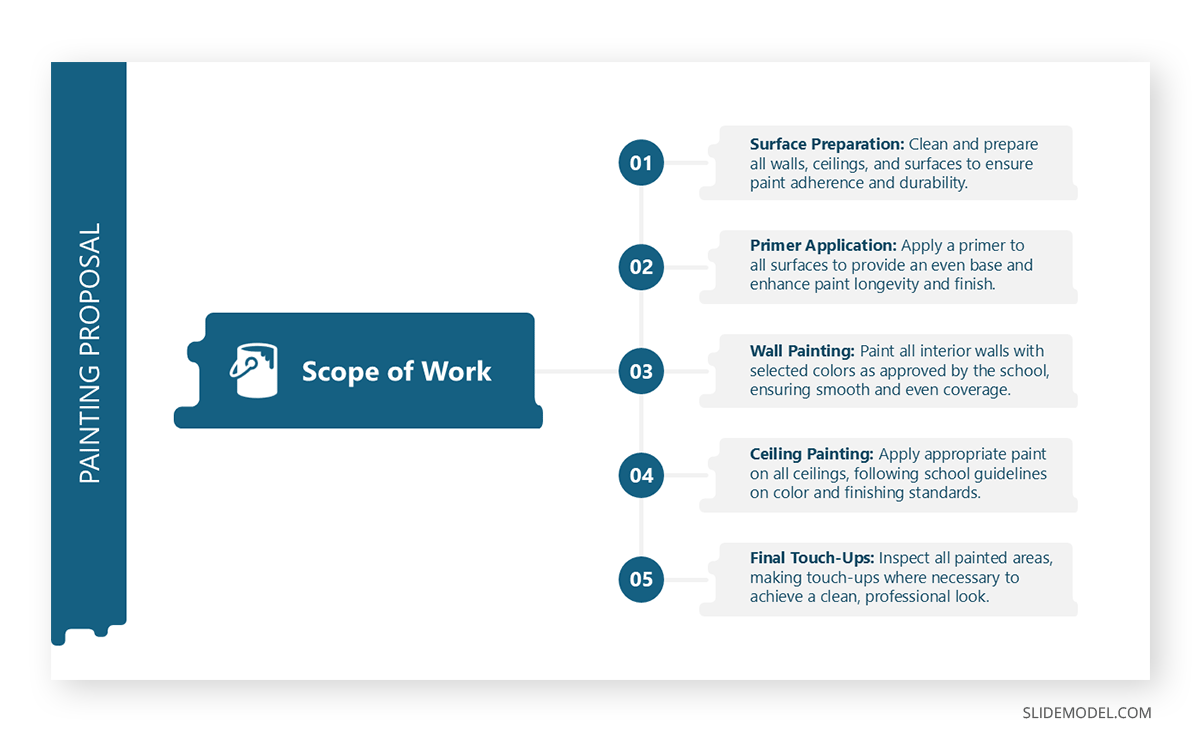
We highly recommend you check the following articles to acknowledge how to present these different sections:
- Architecture Project Presentation – ideal for large-scale construction proposals.
- Requirements Gathering in Projects – to effectively prepare for the requirements that clients might desire but cannot express in simple words.
- Project Scope – to limit the reach of your project to actionable and measurable tasks.
- Project Timeline – to give a timeframe for your construction proposal presentation.
- Project Proposal – general guidance on writing project proposal presentations.
Using Visual Aids in Construction Proposal Presentations
Working with visual aids in construction proposal presentations can help us simplify complex concepts. As a method of visual communication, they convert formal documents into engaging presentations that effectively inform key aspects of the project while inviting the audience to ask questions about any potentially unclear aspect. But, which are the visual aids we should consider when creating a construction proposal presentation?
Project-Specific Graphics: Maps, Site Plans, and Renderings
For construction proposals, project-specific graphics give clients a tangible understanding of the project’s layout and scope. Maps or site plans are practical for showing the location of buildings, utilities, and landscapes. These visuals clarify the project’s physical setting and highlight any geographical challenges or opportunities, such as nearby natural resources or zoning considerations.
Renderings, or digital models, can also bridge the gap between abstract concepts and visual reality. 3D renderings of buildings or structures allow clients to envision the completed project. High-quality renderings create a realistic depiction of the project and can make clients feel more confident about your design and construction approach. These images can significantly benefit complex or large-scale projects where verbal descriptions may fail to convey the final outcome.
Remember, rendering images NEED to depict the actual project scale. This can be managed in one of these two formats: photo merge the rendered images with real-life photos, or add human figures, cars, animals, and urban infrastructure to the images. That way, viewers can get a clear picture of the project’s dimension and urban impact.
Budget and Cost Charts
Itemizing a project’s budget can be challenging, especially when numerous variables are involved, from materials and labor to regulatory compliance and contingency funds. Even when you can opt for presentation handouts to disclose the quantity takeoff sheets, by breaking down costs into an easy-to-read bar or pie charts, you can quickly highlight the largest expenses, project phases, or areas where costs could vary. Cost charts clarify the financial scope, providing transparency on client investment allocation.
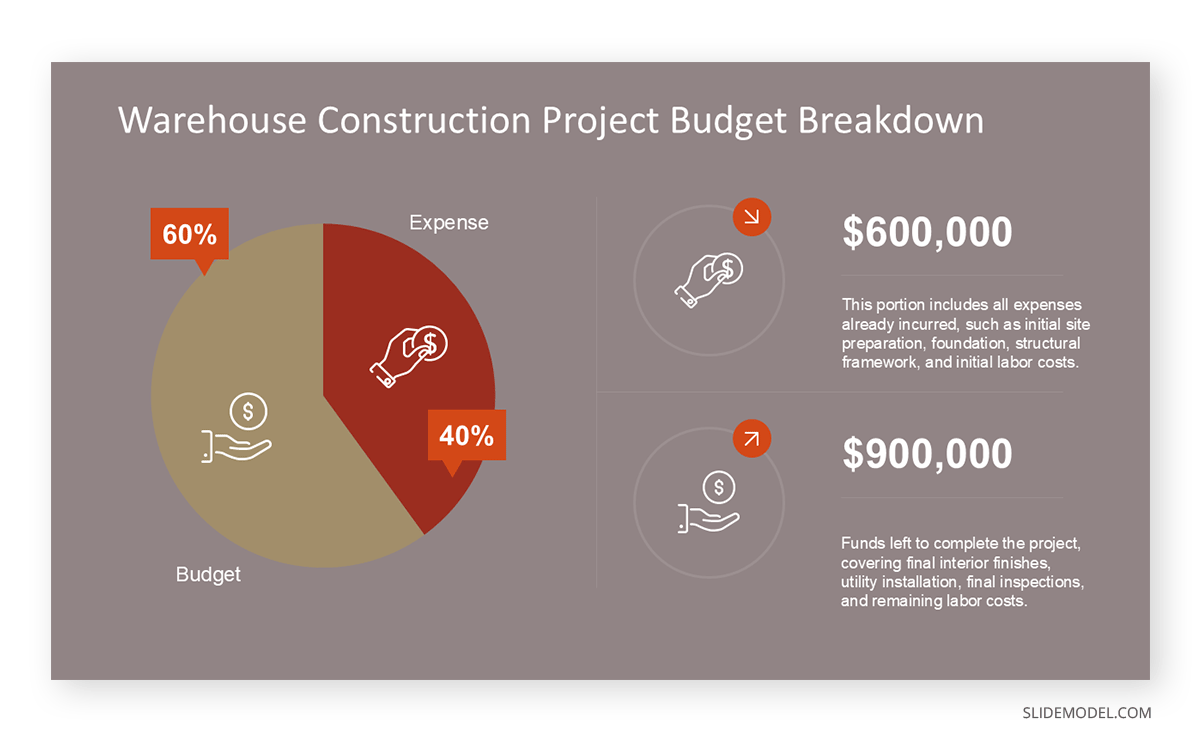
Additionally, these charts can serve as a tool for comparison if clients are considering multiple bids or proposals. Visual representations of the budget highlight transparency and help establish trust, showing the client that you’re clear about cost management. Using these aids during the presentation allows clients to grasp cost distribution without delving into the intricate details of the entire budget document, reducing information overload.
Timeline Visualization
Clear timelines are crucial in construction projects to set client expectations and demonstrate commitment to deadlines. Timelines in the form of Gantt charts or calendar-style layouts make project phases easy to understand and track. By visually showing each phase’s start and end dates, you provide clients with a transparent, reliable picture of how the project will progress.
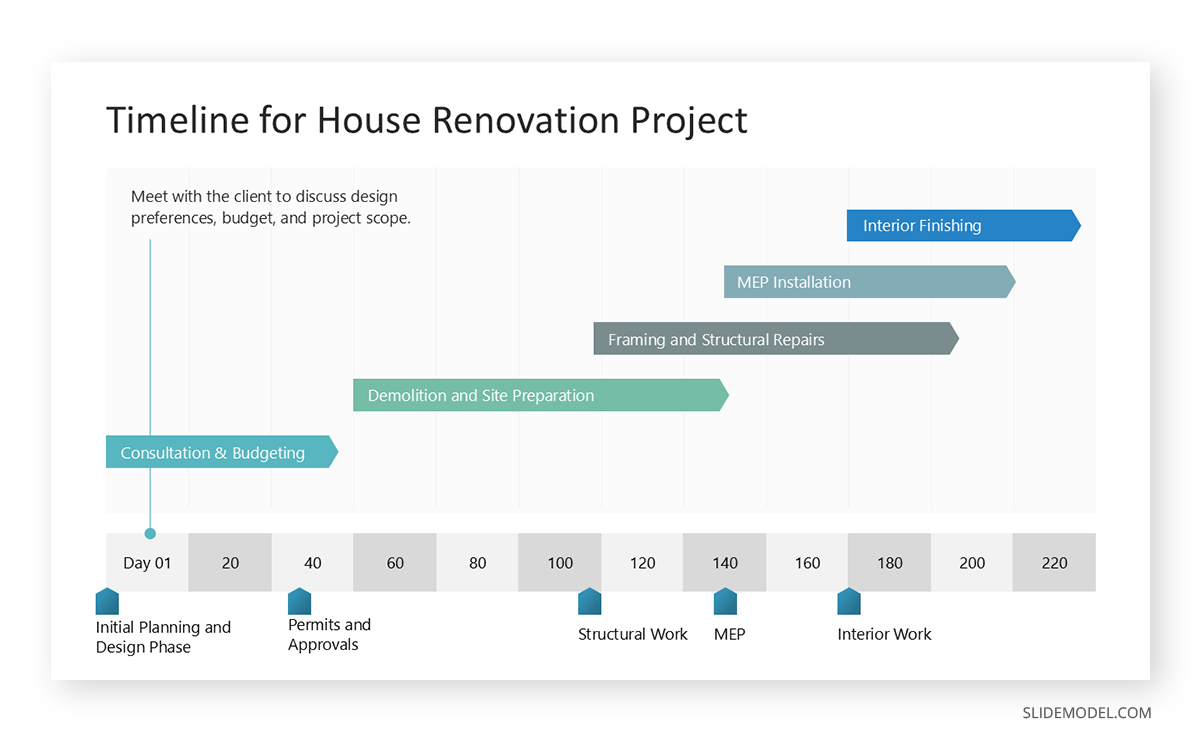
A timeline visualization also helps communicate accountability. Clients feel reassured that their project is being managed precisely when they see the project milestones mapped out. Moreover, these visuals can clarify the interdependencies between different stages, which is especially useful if changes in one phase could impact others.
Multimedia Elements
Incorporating multimedia presentation elements such as animations or brief video clips can add another dimension to your construction proposal presentation. For instance, an animated walkthrough of a building or site layout can capture the client’s attention and give them an immersive sense of the project’s design and flow. This technique is particularly effective for large or complex projects where static visuals might not fully convey the scope or architectural intentions.
Animations can illustrate specific construction phases, showing how the project will evolve. This immersive approach not only enhances client understanding but also demonstrates a commitment to transparency and detail, adding a level of professionalism and sophistication to your proposal.
Recommended Construction Proposal PPT Templates
This section contains our selection of construction proposal example templates. All designs here work perfectly as PowerPoint templates or Google Slides templates, meaning they are entirely customizable to any presentation’s requirements.
Don’t forget to check our selection of Construction PowerPoint templates.
FAQs
How should I start a construction proposal presentation?
Start the presentation with a brief introduction, outlining the project’s purpose and your understanding of the client’s goals. This sets the tone and shows you’ve tailored the proposal to meet their needs.
How long should a construction proposal presentation be?
Aim for 20–30 minutes for the main presentation, allowing additional time for client questions. Keep it focused on maintaining client engagement.
Should I include past project examples in a construction proposal presentation?
Yes, if relevant. Examples of similar past projects demonstrate your experience and capability to deliver on similar projects.
How much technical detail should I include in a construction proposal presentation?
Provide enough detail to show expertise but avoid overwhelming the client. Focus on high-level explanations, and reserve technical specifications for follow-up questions.
Should I provide a physical or digital copy of the proposal?
It’s best to provide both. A digital copy is convenient for client review, while a printed copy can be helpful for in-person discussions and note-taking.
How do I follow up after a construction proposal presentation?
Send a thank-you note summarizing key points and addressing any outstanding questions. To keep the process moving, outline the next steps, such as a follow-up call or meeting.
Final Words
An impactful presentation goes beyond merely conveying information—it shows clients you are fully invested in their project’s success. By customizing your approach, staying responsive to questions, and providing a well-rounded view of the project, you leave clients with a strong impression of your capability and expertise.
Remember, a great construction proposal presentation secures the project and lays the groundwork for a lasting client relationship built on mutual trust and clear communication. Embrace these principles, and your construction proposal presentations will become a powerful tool for winning new business and achieving project success.
